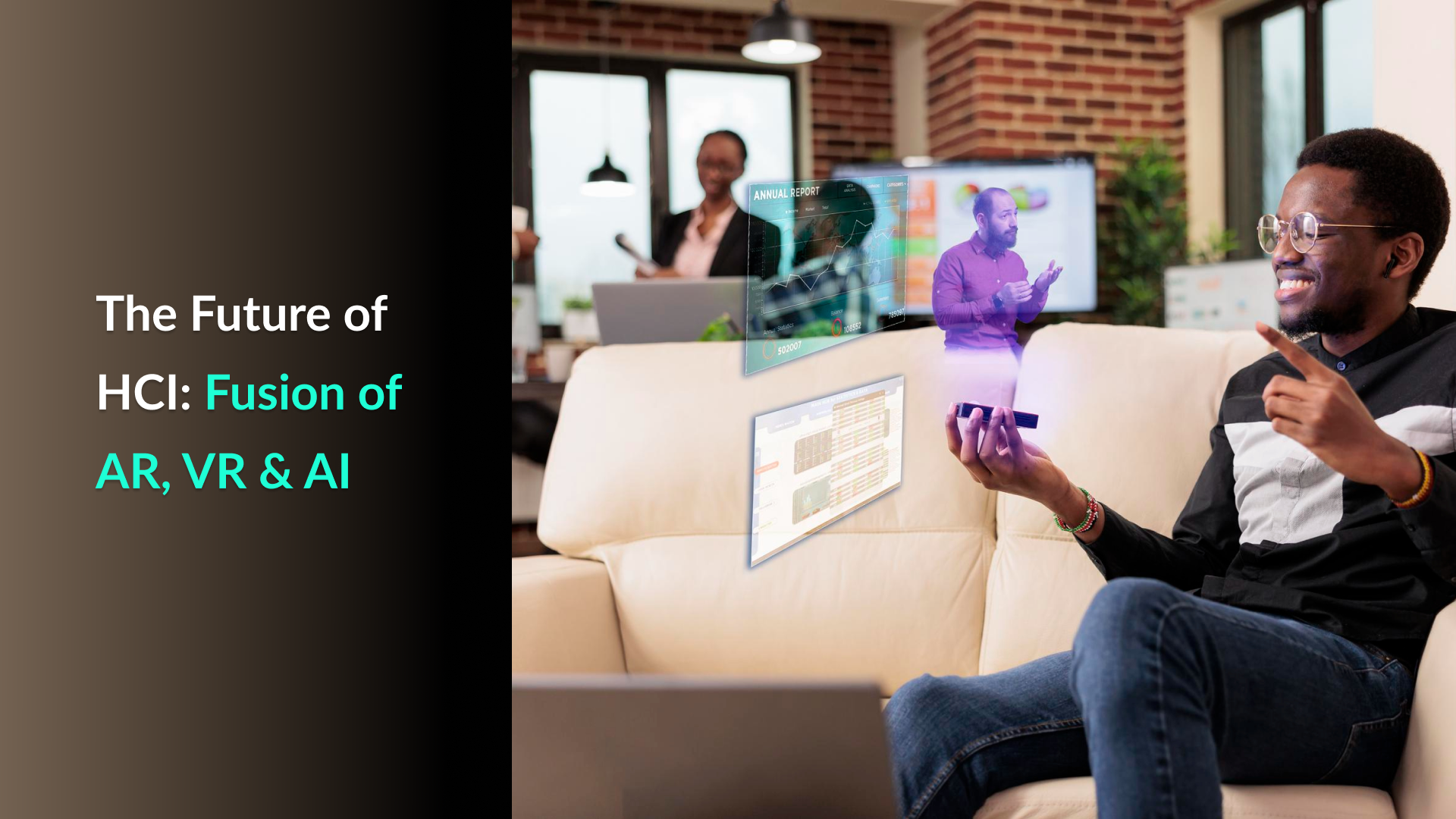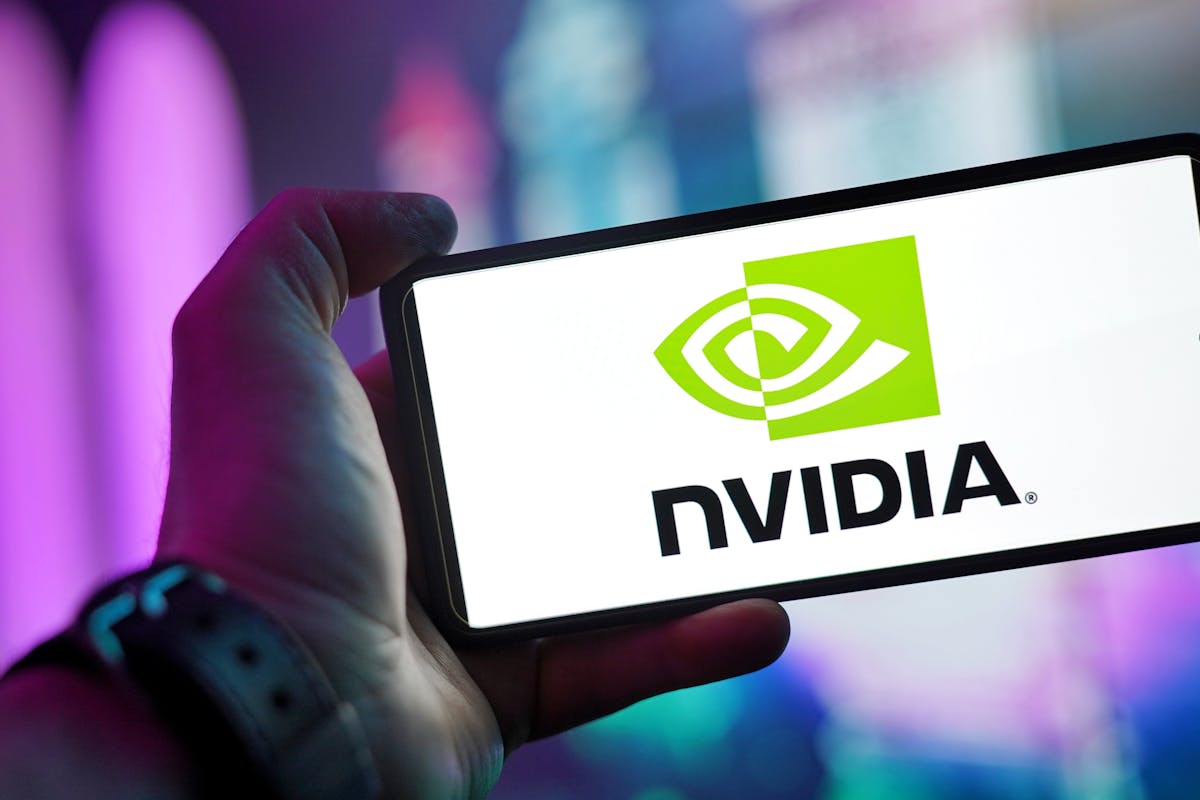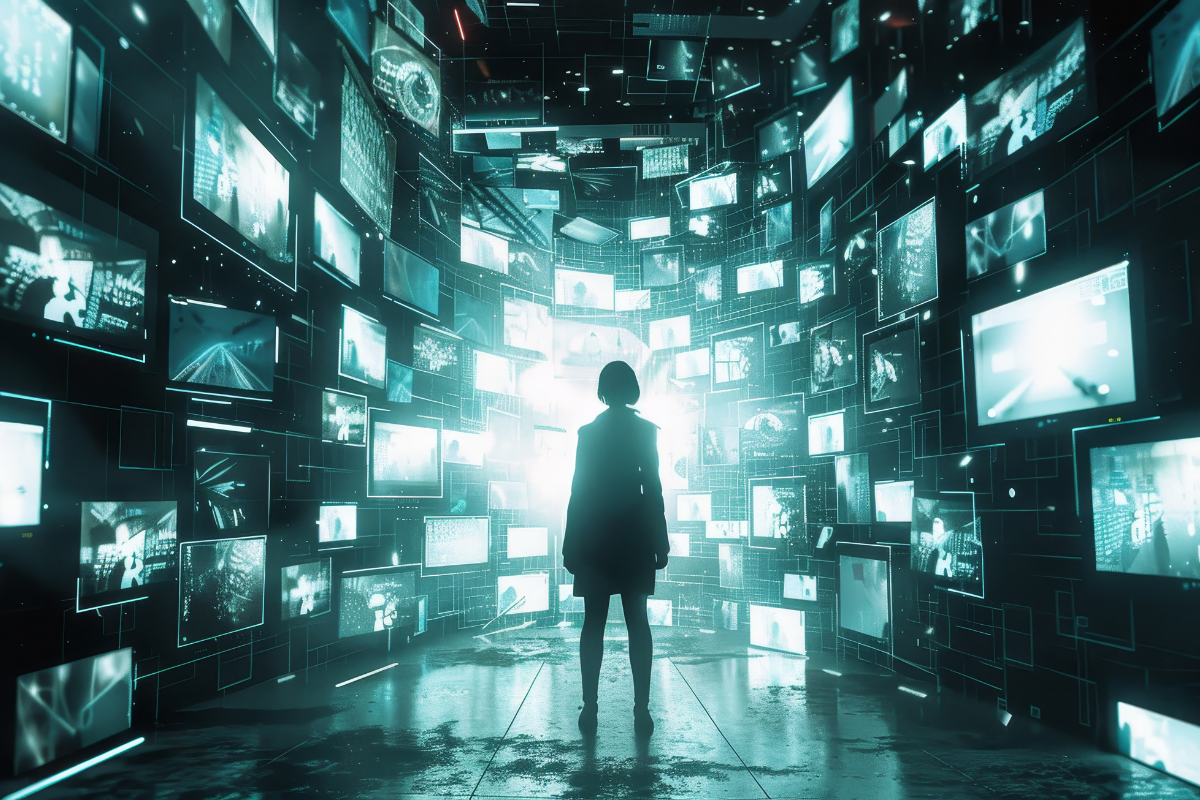The Future of HCI: Fusion of AR, VR & AI
Introduction:
In the rapidly evolving landscape of technology, the convergence of Augmented Reality (AR), Virtual Reality (VR), and Artificial Intelligence (AI) is reshaping the future of Human-Computer Interaction (HCI). These groundbreaking technologies hold the potential to revolutionize the way we interact with digital systems and the world around us. In this blog, we’ll delve into the exciting possibilities and the transformative impact of AR, VR, and AI on HCI.
Augmented Reality (AR) – Enhancing Real-World Experiences:
AR bridges the gap between the digital and physical worlds, superimposing virtual elements onto the real environment. As AR technology advances, the future of HCI is set to witness an array of compelling applications.
- Immersive Retail Experience: Picture trying on clothes virtually or visualizing furniture in your home before making a purchase. AR will redefine the shopping experience, making it more interactive and personalized.
- Context-Aware Information: AR-powered smart glasses or mobile devices can provide real-time information about objects, landmarks, or events, enhancing our understanding of the world.
- Navigation and Wayfinding: AR-based navigation systems can revolutionize how we navigate cities, offering dynamic route guidance and augmented visual cues for directions.

Virtual Reality (VR) – Redefining Immersive Interaction:
VR creates a simulated environment that immerses users in a 3D digital experience. As HCI embraces VR, the following transformative applications emerge –
- Virtual Meetings and Collaboration: VR allows remote teams to collaborate as if they were physically present in the same room, fostering better communication and teamwork.
- Realistic Training and Simulation: Professionals can undergo lifelike simulations, such as pilot training, medical procedures, or hazardous scenarios, without real-world risks.
- Therapeutic Applications: VR is showing promising results in treating various mental health conditions through exposure therapy and stress management.
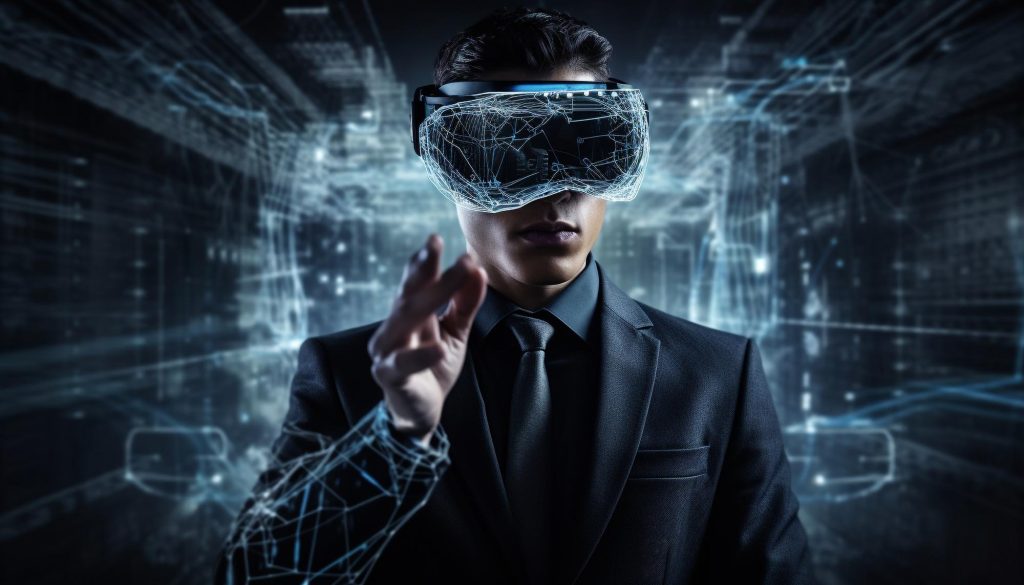
Artificial Intelligence (AI) – Personalizing and Enhancing User Experiences:
AI’s integration into HCI brings forth intelligent systems that can understand user behaviors, preferences, and context. The future of HCI powered by AI includes –
- Personalized Recommendations: AI algorithms can analyze user data to offer personalized product recommendations, content, and services.
- Natural Language Interfaces: AI-driven voice assistants and chatbots enable more intuitive and natural interactions, making technology more accessible to all users.
- Predictive User Experience: AI can anticipate user needs, streamline workflows and automate repetitive tasks, leading to a more efficient and enjoyable user experience.
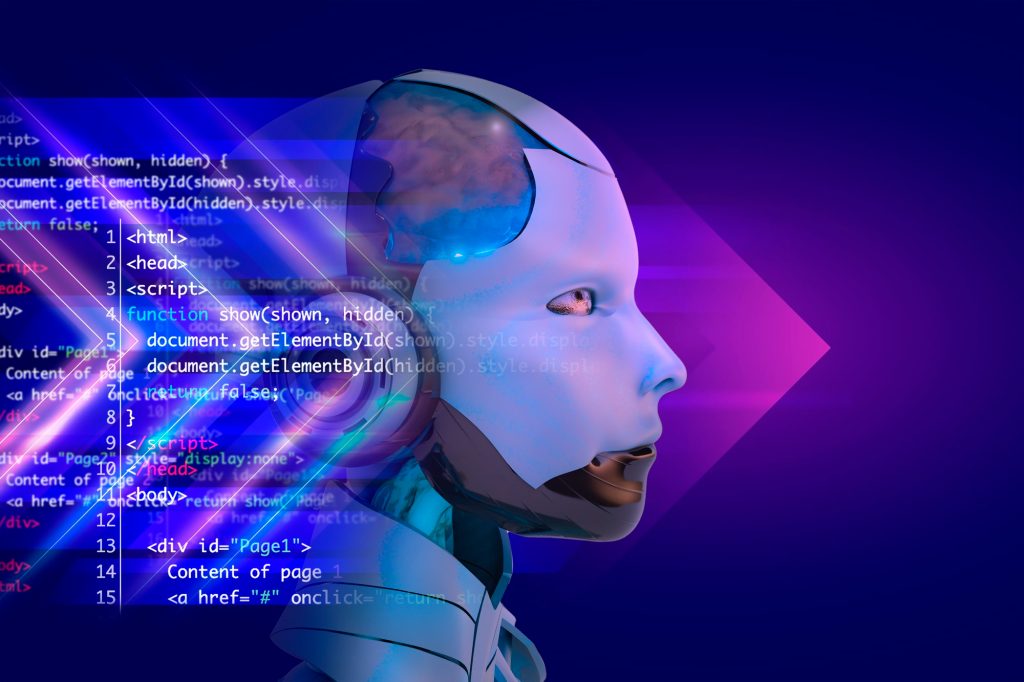
The Synergy of AR, VR, and AI – A Paradigm Shift in HCI:
The true potential of HCI lies in the convergence of AR, VR, and AI. Together, they create a synergy that will redefine our relationship with technology.
- Mixed Reality: The combination of AR and VR will give rise to Mixed Reality (MR), where digital and physical elements coexist seamlessly. This blend opens up unparalleled opportunities for innovative applications across industries.
- Enhanced Learning and Education: MR-powered educational experiences can engage learners through interactive simulations and 3D visualizations, making complex subjects more understandable and captivating.
- Empowering Creativity: Artists and designers will have new tools at their disposal, enabling them to create immersive, interactive, and immersive experiences.
Conclusion:
The future of HCI with AR, VR, and AI holds endless possibilities, promising to transform how we interact with technology and the world. From personalized experiences and immersive simulations to seamless collaboration and smart assistance, these technologies are set to redefine the boundaries of human-computer interaction. As the journey continues, embracing innovation responsibly and ethically will ensure that these technologies bring positive changes to our lives while creating a more connected and inclusive digital future.


